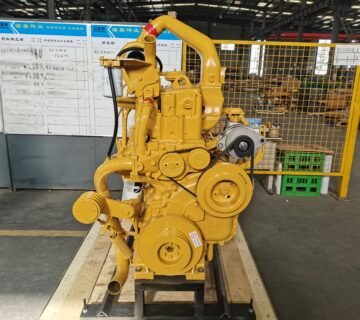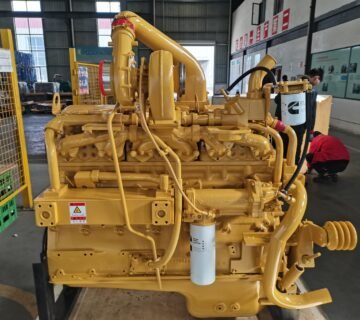How Cummins’ Fail-Safe Systems Prevent Catastrophic Engine Damage
Imagine a hospital ICU during a hurricane. The lights flicker, then vanish. Within seconds, Cummins generators roar to life, powering ventilators and monitors. This flawless transition isn’t luck—it’s the result of engineered fail-safe systems working silently to prevent disaster. For industries where engine failure is unthinkable, Cummins integrates multi-layered protection technologies that guard against catastrophic damage, ensuring reliability when it matters most.

- The Multi-Layered Shield: Core Fail-Safe Technologies
Cummins engines embed proprietary systems designed to anticipate, mitigate, and neutralize threats:
– Intelligent Sensor Networks: Hundreds of sensors monitor critical parameters (temperature, pressure, vibration) in real-time. If readings deviate—such as overheating during heavy load—the system triggers automatic corrections (reducing RPM, activating auxiliary cooling) or safe shutdowns to avoid irreversible damage.
– Redundant Safety Circuits: Critical components like fuel injectors or turbochargers use backup pathways. If a primary circuit fails, secondary systems maintain operation at reduced capacity, preventing sudden stalls in hazardous environments like oil rigs or data centers.
– Advanced Fuel & Filtration Safeguards: Diesel engines are vulnerable to contaminated fuel. Cummins’ high-efficiency filtration systems trap water and particulates before they reach injectors. If blockage occurs, bypass valves ensure uninterrupted fuel flow while alerting operators—a key defense against abrasive wear and injector failure.
- Smart Monitoring: The Brain Behind the Brawn
Cummins’ PowerCommand® controls transform raw data into actionable protection. This integrated ecosystem includes:
– Remote Annunciators: Track up to eight transfer switches or generators from a single dashboard. Color-coded alerts flag issues like voltage drops or frequency instability, enabling preemptive maintenance before minor glitches escalate.
– Predictive Analytics: By analyzing historical performance data (e.g., coolant degradation trends or belt wear patterns), the system forecasts component failures. Fleet managers receive alerts like “Replace air filter within 50 hours” based on actual load conditions—not just mileage.
– Event Logging & Diagnostics: Detailed fault-code libraries (e.g., “low oil pressure during cold start”) simplify troubleshooting. Technicians access step-by-step repair guidance, slashing downtime during critical events.
- Fortified Designs for Extreme-Duty Applications
In sectors like fire protection or marine operations, Cummins reinforces engines with application-specific failsafes:
– Fire Pump Engines: Equipped with Variable Speed Pressure Limiting Controls (VSPLC). These regulate pump output during pressure surges, preventing catastrophic pipe bursts or engine overloads. Derating capabilities also sustain performance in high-heat scenarios.
– Marine & RV Generators: Onan Green Label Parts maintain precise tolerances in humid/salty environments. Crucially, pre-packaged maintenance kits include OEM coolant and belts to prevent corrosion-induced leaks—a leading cause of marine engine failure.
– Mission-Critical Transfer Switches: Withstand ratings up to 200 kA and offer “open/closed transition” modes. If grid power fluctuates during generator switchover, these devices eliminate dangerous arc flashes that could destroy electrical systems.
- Preventive Maintenance: The Human Element in Fail-Safe Operations
Technology alone isn’t foolproof. Cummins’ fail-safe philosophy empowers users through proactive care:
– Condition-Based Servicing: Rather than fixed intervals, maintenance adapts to operating environments. Generators in desert dust storms require air filter changes every 500 hours—not the standard 1,000.
– Digital Maintenance Logs: Recording hourly run data and repairs isn’t just bureaucratic. These logs help Cummins dealers identify recurring anomalies (e.g., abnormal battery drain) and upgrade components before warranties expire.
– Expert-Led Protocols: Authorized dealers follow stringent checklists for emission systems and timing adjustments. A misaligned crankshaft sensor might save $200 upfront but risk piston-valve collisions—a $15,000 repair. Trusting certified technicians ensures failsafes remain calibrated.
- The Cummins Ecosystem: Beyond the Engine
Reliability extends into a unified support network:
– Planned Maintenance Programs: Custom schedules include 24/7 emergency support, priority parts shipping, and software updates for control systems.
– Genuine Parts Guarantee: Aftermarket clutches or filters may fit but lack Cummins’ validation for fail-safe integration. OEM components undergo 200+ validation tests for seamless compatibility.
– Global Compliance: UL 1008, NFPA 110, and IEC certifications aren’t just badges—they mandate third-party verification of every fail-safe’s real-world performance.

Final Thought: Catastrophic engine damage isn’t prevented by reacting to crises—it’s avoided by designing them out. Cummins’ multi-stage fail-safe architecture acts as an invisible shield: sensors detect threats, controls neutralize them, and fortified designs ensure endurance. For hospitals, factories, or fire trucks, this translates to a simple reality—power that won’t quit, because failure was never an option.
Explore Cummins’ maintenance kits or PowerCommand® controls to customize your fail-safe strategy. Connect with certified dealers for a resilience assessment today.





No comment